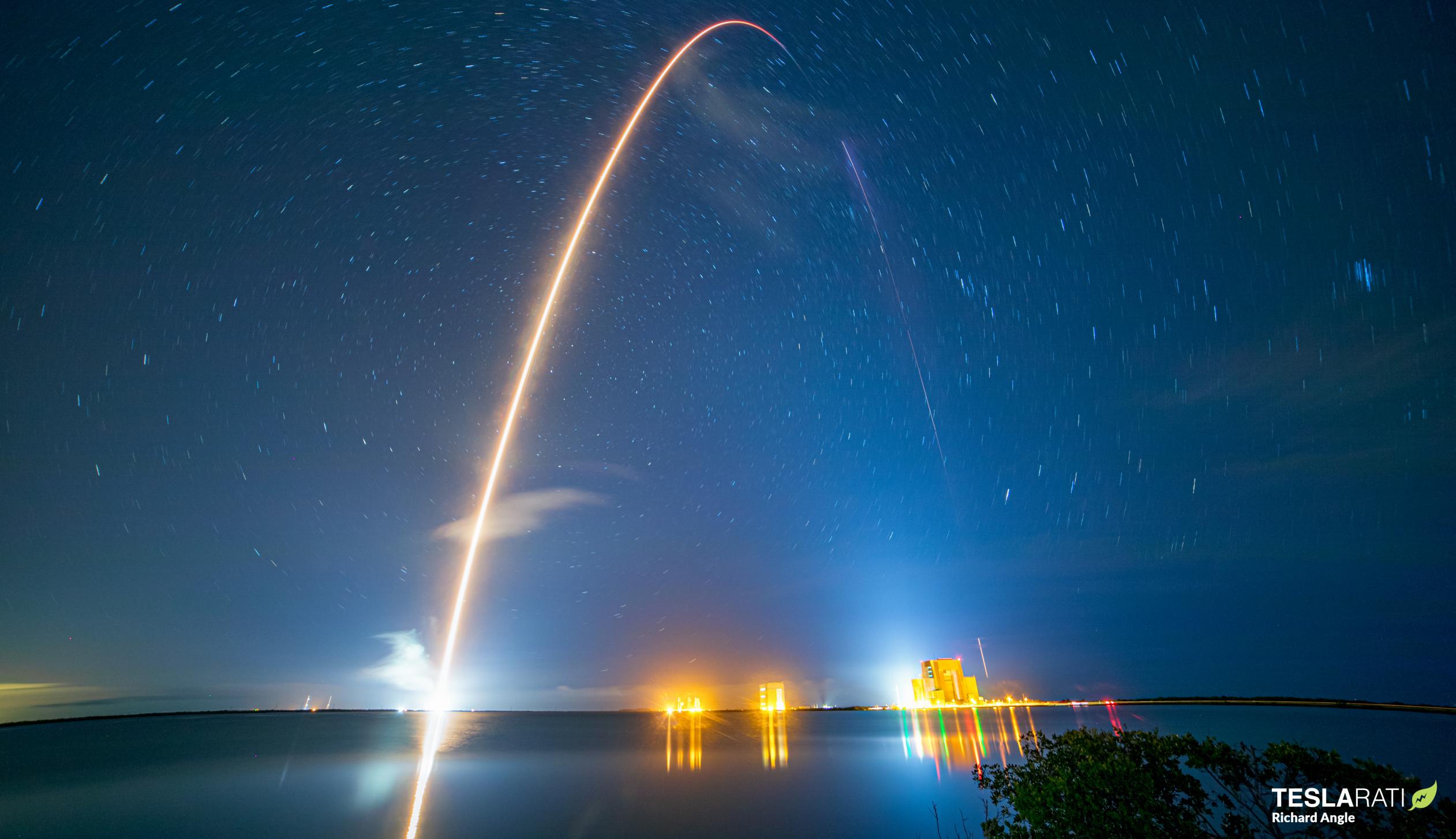

News
SpaceX Falcon 9 rocket nails first operational NASA astronaut launch [updated]
Update: SpaceX has successfully resolved a handful of minor thermal control issues facing the brand new Crew Dragon capsule currently ferrying four astronauts in low Earth orbit (LEO).
As previously noted, shortly after the spacecraft reached orbit, two redundant thermal control system pumps registered pressure spikes, pushing Crew Dragon to use the backup pump. SpaceX was able to resolve that issue, effectively restarting the pumps and confirming healthy operation. Several hours later, the backup pump (“Loop B”) suffered another minor issue but was again returned to healthy operations. Simultaneously, Crew-1 astronauts found themselves stuck at an (admittedly comfortable) cabin temperature of 23C (~73F).
More pressingly, three of four heaters used to warm the propellant fed to Crew Dragon’s small Draco maneuvering and attitude control thrusters were automatically disabled a few hours after liftoff. Essential for most operations in orbit and necessary for Dragon to be allowed to remain docked with the ISS, restoring the functionality of at least one of the three heaters was essential, and SpaceX was thankfully able to restore function to all three by relaxing excessively conservative limits in the spacecraft’s flight software. Thanks to SpaceX’s fast work, Dragon is now in perfect health and ready for two crucial Draco burns at 11:20 am and 12 pm EST (UTC-5) on Monday, November 16th and is still scheduled to arrive at the ISS around 11 pm EST.
Right on schedule, a SpaceX Falcon 9 rocket has successfully lifted off on the company’s operational NASA astronaut launch debut, sending four crew members on their way to the International Space Station (ISS) in a historic moment for commercial spaceflight.
Days prior, NASA and SpaceX completed a multi-day “flight readiness review (FRR),” the results of which made SpaceX the first private company in human history to be qualified by a national space agency for routine astronaut launches. As is now more or less routine, the SpaceX Falcon 9 rocket assigned to NASA’s Crew-1 mission performed flawlessly over the 12 minutes it was involved in the launch, including nominal booster and upper stage performance, a successful booster landing at sea, and a smooth Dragon deployment from Falcon 9’s expendable second stage.
In a small point of concern, Crew Dragon capsule C207 (colloquially named Dragon Resilience by its crew) appeared to suffer a minor hardware or software fault shortly after orbital insertion, offering the first public glimpse behind the scenes as ground teams coordinated with Dragon’s orbiting astronaut crew to diagnose and fix the issue.
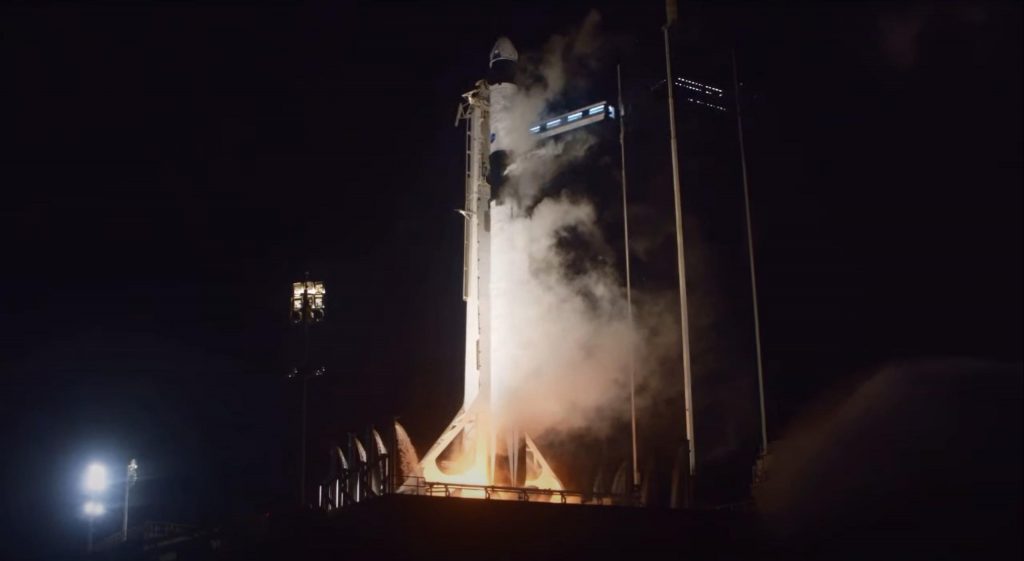
According to information revealed by SpaceX and NASA officials as they interacted with Crew-1 NASA astronauts Mike Hopkins, Victor Glover, Shannon Walker, and Japanese (JAXA) astronaut Soichi Noguchi, Crew Dragon’s fault detection software was tripped sometime after reaching orbit. Both thermal control system (TCS) “loop” pumps – likely referring to pumps used to circulate a liquid-based radiator system to maintain capsule temperature – experienced off-nominal pressure spikes, causing the spacecraft computer to switch to the second pump (“Loop B”).
As SpaceX’s main earth-to-ground communications team member (CapCom) noted, the TCS pump issue was far from critical given that both pumps appeared to be healthy – and one of those two redundant pumps functioning healthily – moments after Dragon alerted its passengers to the issue. Deemed to be not a showstopper, SpaceX continued the mission and permitted Crew Dragon to begin its first orbit-raising thruster burn – the first of a fairly complex series of ‘phasing’ burns needed to safely rendezvous with the International Space Station (ISS).
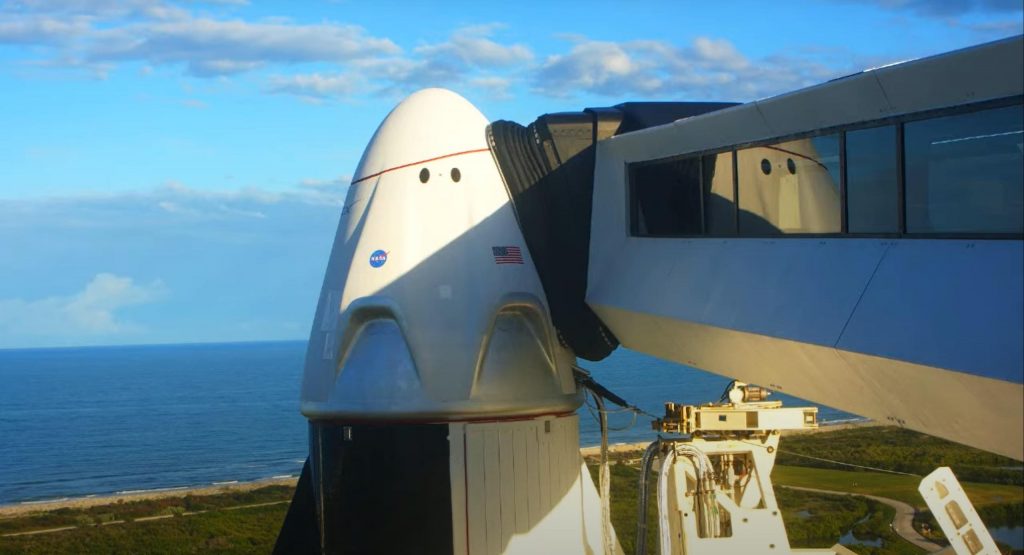
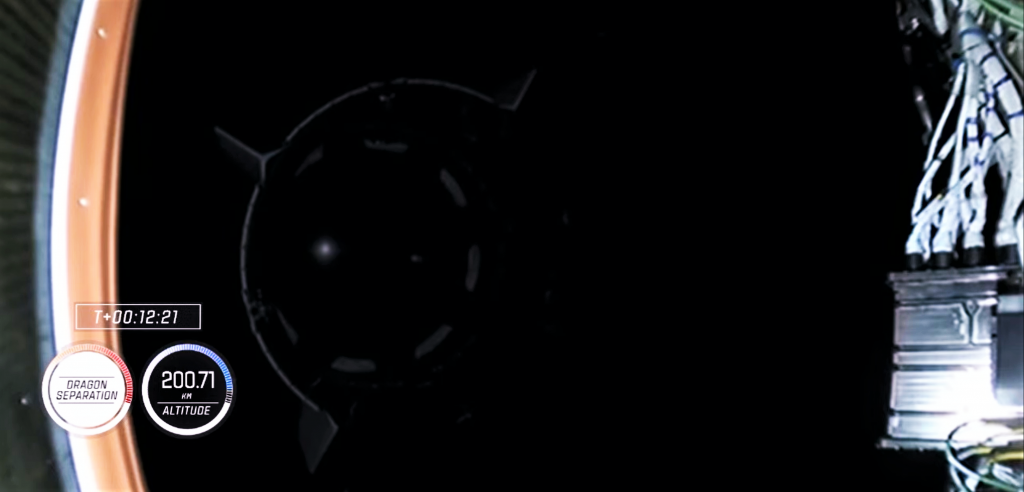
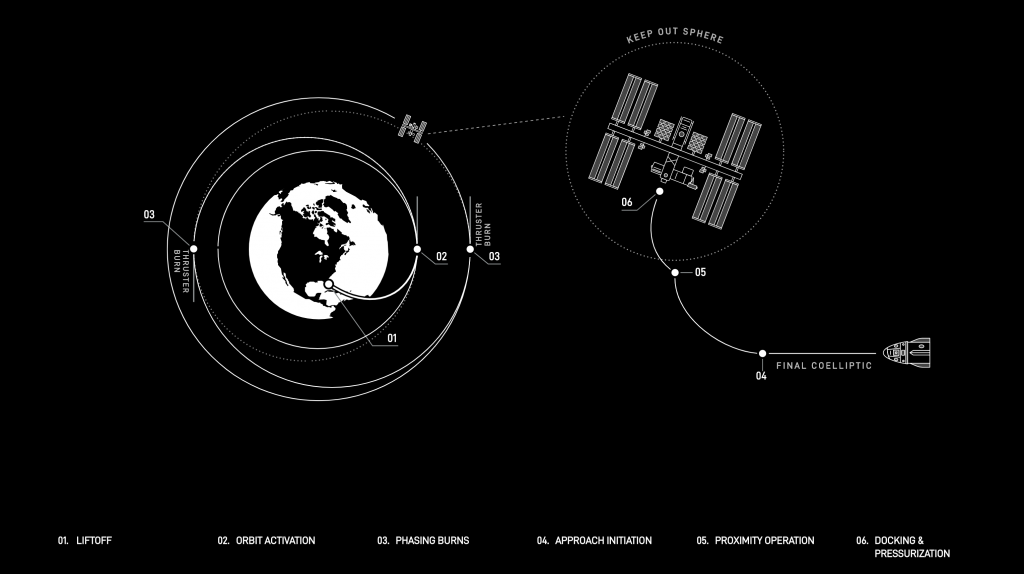
Unfortunately, due to a 24-hour weather delay from November 14th to November 15th, the complexities of orbital rendezvous mean that Crew Dragon’s Crew-1 mission to the ISS will involve a roughly day-long cruise phase. Had SpaceX been able to launch on the 14th, the cruise phase would have been just 8.5 hours long – perhaps the fastest crewed US space station rendezvous ever. Crew-1 will thus align quite closely with SpaceX’s Demo-2 astronaut launch debut, although likely not interspersed with manual astronaut piloting tests this time around.
On top of Crew Dragon’s thus far successful performance, Falcon 9 also completed a task critical for future Crew Dragon launches when new booster B1061 safely landed aboard SpaceX drone ship Of Course I Still Love You (OCISLY). While normally a distinctly secondary objective, booster recovery was all but essential for SpaceX and NASA during the Crew-1 launch after NASA’s recent reveal that B1061 has been assigned to launch Crew-2 as early as March 31st, 2021. In the likely event that the Falcon 9 booster is in good condition and NASA signs off after shadowing SpaceX’s refurbishment process, SpaceX will also become the first private company in history to launch astronauts into orbit on a flight-proven rocket booster. Additionally, thanks to plans to reuse Crew Dragon capsule C206 of Demo-2 fame, Crew-2 will also mark the first time in history that US astronauts launch into orbit in a reused space capsule.


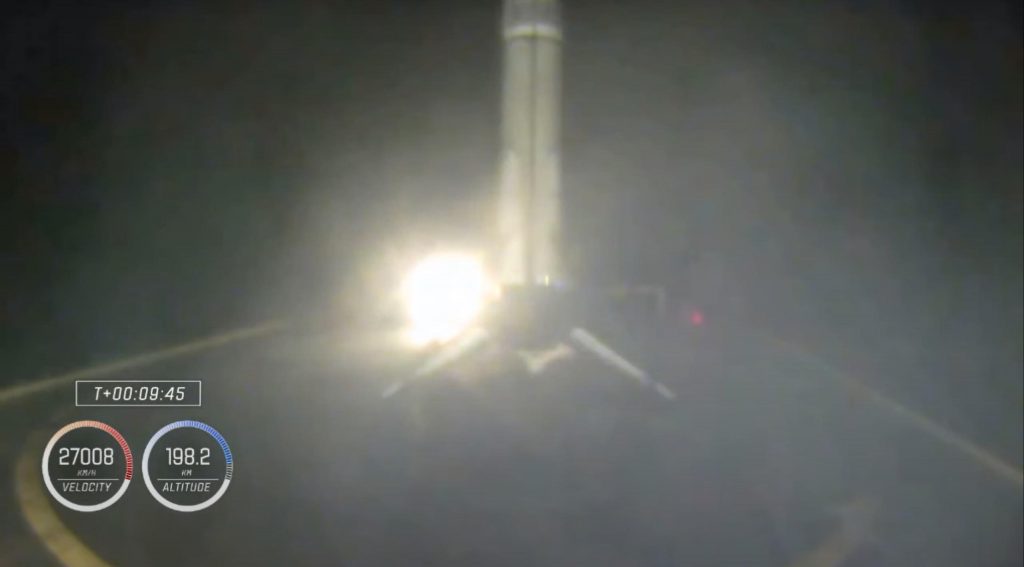
If the Crew-1 cruise phases goes according to plan, Crew Dragon will autonomously ferry Hopkins, Glover, Walker, and Noguchi from a ~200 km (~125 mi) parking orbit to the International Space Station (ISS) between now and Monday, November 16th, nominally docking with the space station around 11 pm EST (04:00 UTC 17 Nov). From liftoff to reentry, Crew-1 is expected to be the longest continuous spaceflight of a US spacecraft in American history, spending approximately six months in orbit. For JAXA astronaut Soichi Noguchi, his Crew-1 launch also made him the third astronaut in human history to fly to orbit on three separate vehicles.
Ultimately, for SpaceX, the company has never been closer to achieving its foundational goal of enabling the affordable expansion of humanity into space than it is after today’s successful Crew-1 launch.
Elon Musk
Tesla begins expanding Robotaxi access: here’s how you can ride
You can ride in a Tesla Robotaxi by heading to its website and filling out the interest form. The company is hand-picking some of those who have done this to gain access to the fleet.

Tesla has begun expanding Robotaxi access beyond the initial small group it offered rides to in late June, as it launched the driverless platform in Austin, Texas.
The small group of people enjoying the Robotaxi ride-hailing service is now growing, as several Austin-area residents are receiving invitations to test out the platform for themselves.
The first rides took place on June 22, and despite a very small number of very manageable and expected hiccups, Tesla Robotaxi was widely successful with its launch.
Tesla Robotaxi riders tout ‘smooth’ experience in first reviews of driverless service launch
However, Tesla is expanding the availability of the ride-hailing service to those living in Austin and its surrounding areas, hoping to gather more data and provide access to those who will utilize it on a daily basis.
Many of the people Tesla initially invited, including us, are not local to the Austin area.
There are a handful of people who are, but Tesla was evidently looking for more stable data collection, as many of those early invitees headed back to where they live.
The first handful of invitations in the second round of the Robotaxi platform’s Early Access Program are heading out to Austin locals:
I just got a @robotaxi invite! Super excited to go try the service out! pic.twitter.com/n9mN35KKFU
— Ethan McKanna (@ethanmckanna) July 1, 2025
Tesla likely saw an influx of data during the first week, as many traveled far and wide to say they were among the first to test the Robotaxi platform.
Now that the first week and a half of testing is over, Tesla is expanding invites to others. Many of those who have been chosen to gain access to the Robotaxi app and the ride-hailing service state that they simply filled out the interest form on the Robotaxi page of Tesla’s website.
That’s the easiest way you will also gain access, so be sure to fill out that form if you have any interest in riding in Robotaxi.
Tesla will continue to utilize data accumulated from these rides to enable more progress, and eventually, it will lead to even more people being able to hail rides from the driverless platform.
With more success, Tesla will start to phase out some of the Safety Monitors and Supervisors it is using to ensure things run smoothly. CEO Elon Musk said Tesla could start increasing the number of Robotaxis to monitors within the next couple of months.
Elon Musk
Tesla analyst issues stern warning to investors: forget Trump-Musk feud

A Tesla analyst today said that investors should not lose sight of what is truly important in the grand scheme of being a shareholder, and that any near-term drama between CEO Elon Musk and U.S. President Donald Trump should not outshine the progress made by the company.
Gene Munster of Deepwater Management said that Tesla’s progress in autonomy is a much larger influence and a significantly bigger part of the company’s story than any disagreement between political policies.
Munster appeared on CNBC‘s “Closing Bell” yesterday to reiterate this point:
“One thing that is critical for Tesla investors to remember is that what’s going on with the business, with autonomy, the progress that they’re making, albeit early, is much bigger than any feud that is going to happen week-to-week between the President and Elon. So, I understand the reaction, but ultimately, I think that cooler heads will prevail. If they don’t, autonomy is still coming, one way or the other.”
BREAKING: GENE MUNSTER SAYS — $TSLA AUTONOMY IS “MUCH BIGGER” THAN ANY FEUD 👀
He says robotaxis are coming regardless ! pic.twitter.com/ytpPcwUTFy
— TheSonOfWalkley (@TheSonOfWalkley) July 2, 2025
This is a point that other analysts like Dan Ives of Wedbush and Cathie Wood of ARK Invest also made yesterday.
On two occasions over the past month, Musk and President Trump have gotten involved in a very public disagreement over the “Big Beautiful Bill,” which officially passed through the Senate yesterday and is making its way to the House of Representatives.
Musk is upset with the spending in the bill, while President Trump continues to reiterate that the Tesla CEO is only frustrated with the removal of an “EV mandate,” which does not exist federally, nor is it something Musk has expressed any frustration with.
In fact, Musk has pushed back against keeping federal subsidies for EVs, as long as gas and oil subsidies are also removed.
Nevertheless, Ives and Wood both said yesterday that they believe the political hardship between Musk and President Trump will pass because both realize the world is a better place with them on the same team.
Munster’s perspective is that, even though Musk’s feud with President Trump could apply near-term pressure to the stock, the company’s progress in autonomy is an indication that, in the long term, Tesla is set up to succeed.
Tesla launched its Robotaxi platform in Austin on June 22 and is expanding access to more members of the public. Austin residents are now reporting that they have been invited to join the program.
Elon Musk
Tesla surges following better-than-expected delivery report
Tesla saw some positive momentum during trading hours as it reported its deliveries for Q2.

Tesla (NASDAQ: TSLA) surged over four percent on Wednesday morning after the company reported better-than-expected deliveries. It was nearly right on consensus estimations, as Wall Street predicted the company would deliver 385,000 cars in Q2.
Tesla reported that it delivered 384,122 vehicles in Q2. Many, including those inside the Tesla community, were anticipating deliveries in the 340,000 to 360,000 range, while Wall Street seemed to get it just right.
Tesla delivers 384,000 vehicles in Q2 2025, deploys 9.6 GWh in energy storage
Despite Tesla meeting consensus estimations, there were real concerns about what the company would report for Q2.
There were reportedly brief pauses in production at Gigafactory Texas during the quarter and the ramp of the new Model Y configuration across the globe were expected to provide headwinds for the EV maker during the quarter.
At noon on the East Coast, Tesla shares were up about 4.5 percent.
It is expected that Tesla will likely equal the number of deliveries it completed in both of the past two years.
It has hovered at the 1.8 million mark since 2023, and it seems it is right on pace to match that once again. Early last year, Tesla said that annual growth would be “notably lower” than expected due to its development of a new vehicle platform, which will enable more affordable models to be offered to the public.
These cars are expected to be unveiled at some point this year, as Tesla said they were “on track” to be produced in the first half of the year. Tesla has yet to unveil these vehicle designs to the public.
Dan Ives of Wedbush said in a note to investors this morning that the company’s rebound in China in June reflects good things to come, especially given the Model Y and its ramp across the world.
He also said that Musk’s commitment to the company and return from politics played a major role in the company’s performance in Q2:
“If Musk continues to lead and remain in the driver’s seat, we believe Tesla is on a path to an accelerated growth path over the coming years with deliveries expected to ramp in the back-half of 2025 following the Model Y refresh cycle.”
Ives maintained his $500 price target and the ‘Outperform’ rating he held on the stock:
“Tesla’s future is in many ways the brightest it’s ever been in our view given autonomous, FSD, robotics, and many other technology innovations now on the horizon with 90% of the valuation being driven by autonomous and robotics over the coming years but Musk needs to focus on driving Tesla and not putting his political views first. We maintain our OUTPERFORM and $500 PT.”
Moving forward, investors will look to see some gradual growth over the next few quarters. At worst, Tesla should look to match 2023 and 2024 full-year delivery figures, which could be beaten if the automaker can offer those affordable models by the end of the year.
-

 Elon Musk2 days ago
Elon Musk2 days agoTesla investors will be shocked by Jim Cramer’s latest assessment
-

 News1 week ago
News1 week agoTesla Robotaxi’s biggest challenge seems to be this one thing
-

 Elon Musk2 weeks ago
Elon Musk2 weeks agoElon Musk slams Bloomberg’s shocking xAI cash burn claims
-

 News2 weeks ago
News2 weeks agoTexas lawmakers urge Tesla to delay Austin robotaxi launch to September
-

 Elon Musk1 week ago
Elon Musk1 week agoFirst Look at Tesla’s Robotaxi App: features, design, and more
-

 Elon Musk2 weeks ago
Elon Musk2 weeks agoTesla Robotaxis are becoming a common sight on Austin’s public roads
-

 Elon Musk2 weeks ago
Elon Musk2 weeks agoxAI’s Grok 3 partners with Oracle Cloud for corporate AI innovation
-

 Elon Musk2 weeks ago
Elon Musk2 weeks agoSpaceX President meets India Minister after Starlink approval

















